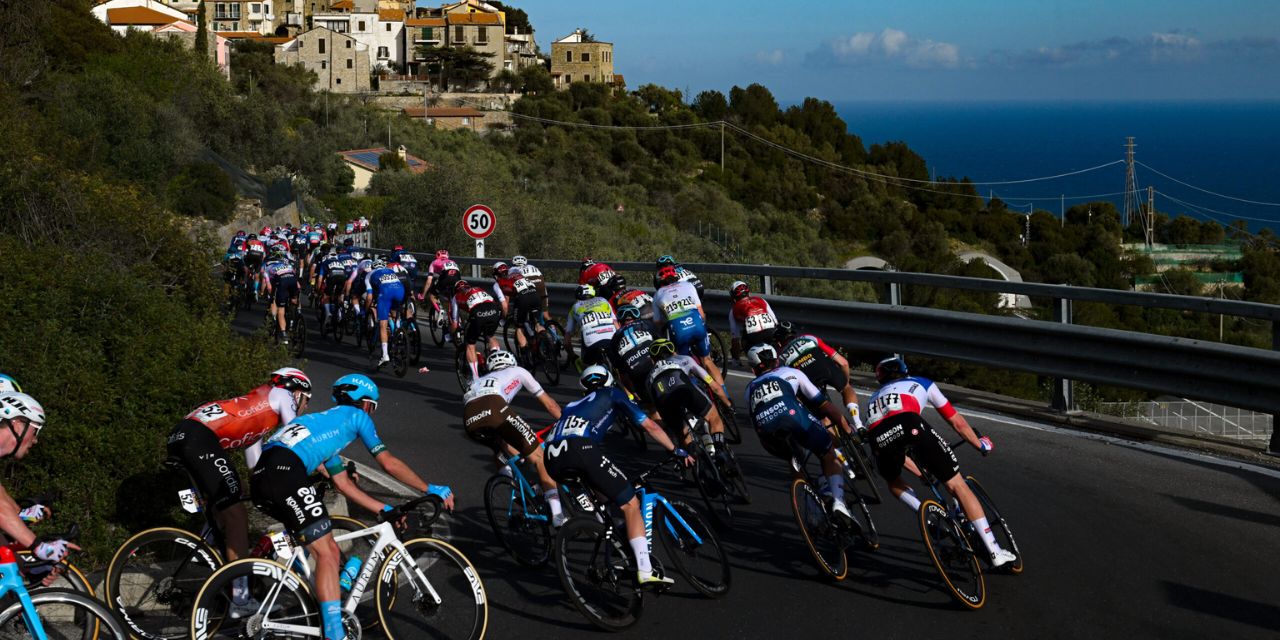Part of Milan-Sanremo’s ultimate double-act, the Cipressa could be seen as inconsequential climb, since no rider has managed to launch a winning move here for almost 30 years. Yet, this remains perhaps the biggest question every year: will someone attack on the Cipressa? Winning the Classicissima by attacking on this climb, with almost 30 km to go, could be considered close to impossible, because the ascent is followed by 10 flat km on the Aurelia state highway, where the top teams’ domestiques will give everything they have left to close the gap, and then the Poggio, where the big favourites will fire the last bullets before diving into Sanremo and decide the matters. Yet in every edition, right up to the last metre of this rather gentle climb (5.6 km at 4.1%), the hope of seeing someone try to disrupt the plans of the entire peloton is the last to die.
Even Marco Pantani gave it a shot in 1999: fresh from his Giro-Tour double the year before, the Pirate, in a period of semi-omnipotence, attacked on the Cipressa, sending the Italian public, more involved than ever in this sport, into pure delirium. Unfortunately, the climb was too short and gentle for a climber like Pantani, who, in fact, was promptly reabsorbed by the bunch at the end of the descent. But that sprint, that attempt to escape the logic of an already written finale, has remained in the collective imagination, turning the Cipressa into the very last hope to try to avoid the inevitable. The climb of the brave, the climb of the revolutionaries.
The Cipressa was included in the route of the Milano-Sanremo in 1982 and proved decisive straight away, although no one got to see that due to the strike by RAI (the Italian state owned public service broadcaster), which decided not to show the race. It was a peculiar edition, conditioned by cold and hail as well as several excellent withdrawals. This ultimately rewarded those 13 brave riders who had formed the early breakaway. The Frenchman Marc Gomez and his compatriot Alain Bondue broke away from the other 11 on the Cipressa and Bondue’s fall on the descent of the Poggio gave Gomez the most beautiful and unexpected victory of his career.
The Cipressa, however, is not only a climb, but also a very technical descent (remember Niccolò Bonifazio’s crazy dive in 2019?). Francesco Moser understood this at first sight and attacked on those hairpin bends back in 1983. However, this brave attempt ironically paved the way for the subsequent attack of Moser’s eternal rival Giuseppe Saronni on the Poggio, But Moser gave it another shot the following year, in 1984, finally managing to win the Classicissima after chasing it for many years.
In 1990, the Cipressa was the canvas on which Gianni Bugno painted one his masterpieces, but 1996 was the last edition in which an attack on the penultimate climb of the Sanremo proved decisive. Led by Gabriele Colombo, Oleksandr Hončenkov, Michele Coppolillo and Max Sciandri, the breakaway took off on the Aurelia and the four stoically managed to maintain a gap of around thirty seconds on the chasing group on the Poggio. In the end, Colombo took the most important victory of his career. Since that day, no one has managed to make the difference on the Cipressa. Twenty-eight years have passed, but we keep dreaming: will someone attack on the Cipressa in 2024?
































